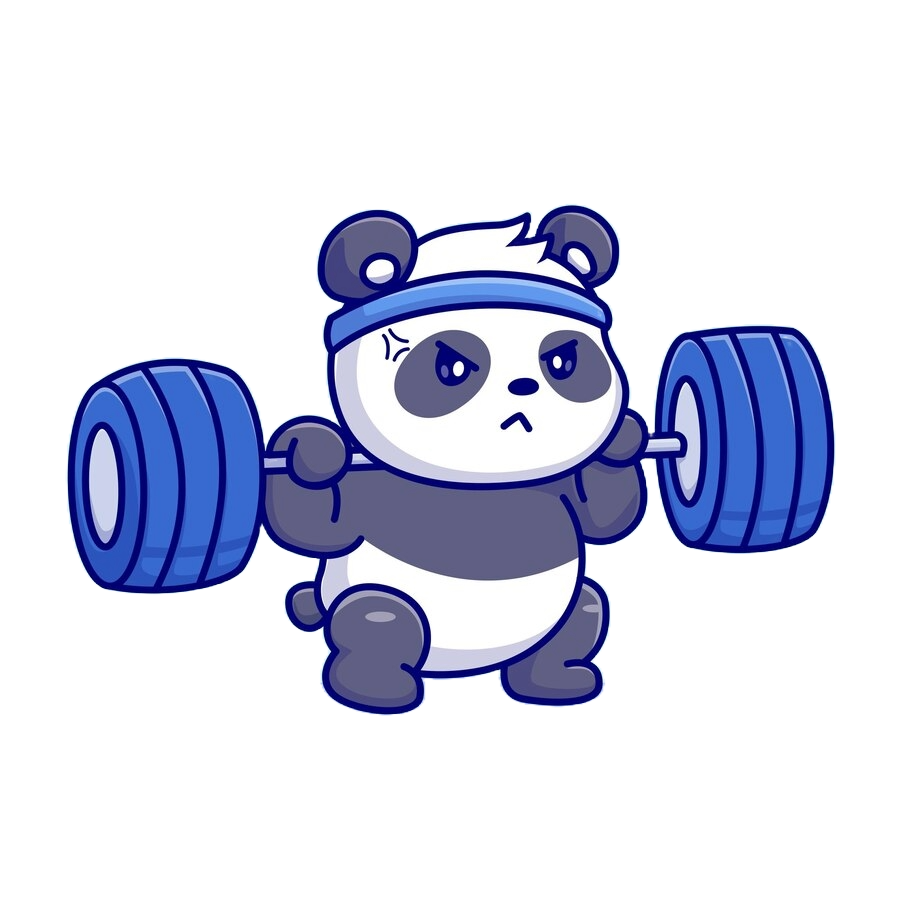Getting Started in the Gym: A Beginner's Guide
Stepping into the gym for the first time can feel overwhelming. With so many machines, weights, and workout programs available, it's easy to get lost in the noise. But starting your fitness journey doesn’t have to be complicated. Whether your goal is to build muscle, lose weight, or improve overall health, a structured plan will set you up for success. This guide will help you navigate the essentials so you can walk into the gym with confidence.
1. Define Your Goals
Before you even touch a dumbbell, it’s important to establish clear fitness goals. Are you looking to gain muscle, lose fat, or enhance endurance? Your goal will dictate the type of workouts and training split that work best for you.
- Muscle Gain: Focus on resistance training with progressive overload. Stick to compound movements and work in a rep range of 6-12 for hypertrophy.
- Fat Loss: Incorporate both strength training and cardio while maintaining a calorie deficit through diet.
- Endurance: Prioritize cardiovascular training with activities like running, cycling, or rowing.
Having a well-defined goal keeps you focused and allows you to measure progress effectively.

2. Learn the Basics of Strength Training and Cardio
Strength training and cardio are the two main components of any gym routine. A well-balanced program should include both:
Strength Training
Strength training builds muscle, strengthens bones, and increases metabolism. Beginners should focus on compound movements like:
- Squats – Targets legs, glutes, and core.
- Deadlifts – Works the entire posterior chain, including hamstrings, glutes, and back.
- Bench Press – Strengthens the chest, shoulders, and triceps.
- Rows – Builds back strength and improves posture.
Start with lighter weights to perfect your form before increasing the load. A good beginner routine consists of three full-body workouts per week, each including compound exercises.
Cardio Workouts
Cardio plays a vital role in heart health and fat loss. There are two primary types:
- Steady-State Cardio: Jogging, cycling, or swimming at a consistent pace for 30-60 minutes.
- High-Intensity Interval Training (HIIT): Short bursts of intense exercise followed by rest periods. HIIT is efficient for fat loss and improving endurance.
Aim for at least 150 minutes of moderate-intensity cardio or 75 minutes of high-intensity cardio per week.
3. Follow a Structured Plan
One of the biggest mistakes beginners make is going to the gym without a plan. Random workouts lead to inconsistent progress. A structured program provides:
- Progressive overload: Gradually increasing weight or reps to stimulate muscle growth.
- Rest and recovery: Scheduling rest days to avoid burnout and injury.
- Variety: A mix of strength and conditioning to prevent plateaus.
Beginner Workout Plan Example
Day 1: Full-Body Strength
- Squats – 3 sets of 10 reps
- Bench Press – 3 sets of 10 reps
- Bent-Over Rows – 3 sets of 10 reps
- Plank – 3 sets of 30 seconds
Day 2: Cardio & Core
- 20-minute jog or cycling
- Hanging Leg Raises – 3 sets of 12 reps
- Russian Twists – 3 sets of 20 reps
Day 3: Full-Body Strength
- Deadlifts – 3 sets of 8 reps
- Overhead Press – 3 sets of 10 reps
- Lat Pulldowns – 3 sets of 12 reps
- Side Planks – 3 sets per side
Consistency is key. Stick to your plan and track your progress.

4. Master Proper Form to Prevent Injury
Proper technique is crucial for preventing injuries and maximizing results. Common mistakes include:
- Arching the back during deadlifts – Maintain a neutral spine to avoid lower back strain.
- Not squatting deep enough – Aim for parallel or deeper to fully activate leg muscles.
- Using too much momentum – Control the weight instead of swinging it.
If you're unsure, consider working with a trainer or using reputable online tutorials to learn proper form.
5. Nutrition: Fueling Your Workouts
Exercise alone won’t get you optimal results—nutrition is just as important.
- Protein: Essential for muscle repair and growth. Aim for at least 0.7-1g of protein per pound of body weight.
- Carbohydrates: Provide energy for workouts. Stick to whole grains, fruits, and vegetables.
- Fats: Support hormone production. Include healthy fats from sources like nuts, avocados, and olive oil.
Hydration is also key—drink plenty of water throughout the day and around workouts.
6. Stay Consistent and Track Progress
Results take time. The key is consistency. Stick to your program, track your progress, and stay patient. Fitness is a long-term commitment, not a quick fix. Ways to track progress include:
- Strength improvements: Increase in weights lifted.
- Body measurements: Tracking waist, arms, and leg size.
- Photos: Taking progress pictures every few weeks.
Small, incremental improvements lead to significant long-term results.
Take Your Training to the Next Level with PeakFit AI
Getting started is the hardest part, but staying on track is just as important. That’s where PeakFit AI comes in. Our AI-powered workout plans are customized to your fitness goals, experience level, and available equipment—eliminating the guesswork and helping you achieve real results.
Instead of spending hundreds on personal trainers, PeakFit AI offers a cost-effective and efficient way to follow a personalized training plan. With built-in progress tracking, adaptive workouts, and expert-backed guidance, you'll never feel lost in the gym again.
Take control of your fitness journey today.
